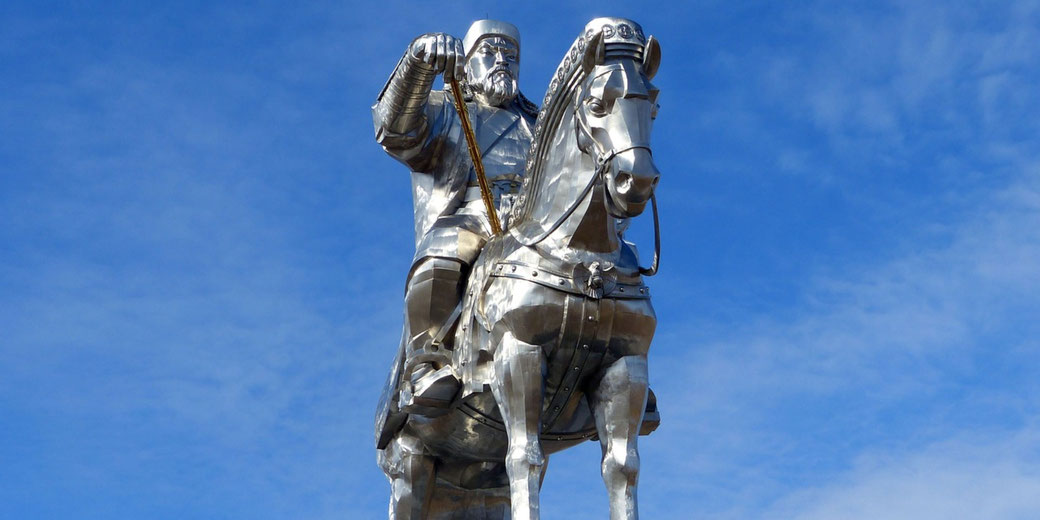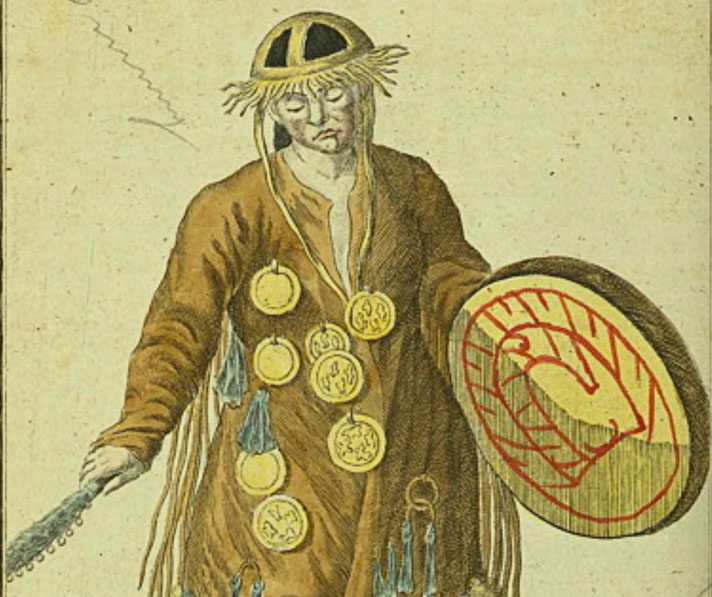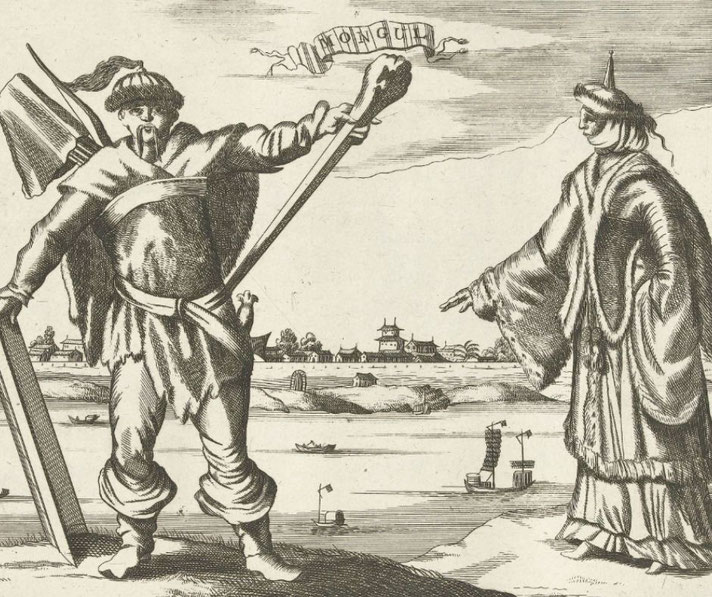There is a good chance that you are a descendant of Genghis Khan. Here's why.

Across Asia, a large number of men today carry an almost identical Y-chromosome. This odd pattern first appeared during a study of Central Asian populations and suggested a single male ancestor who lived roughly 800 years ago.
Because that timeline aligns with the lifetime of Genghis Khan, and because the geographical reach matches the reach of the Mongol Empire, many researchers now believe that millions of people alive today are his descendants.
Thanks the science of genetics and the history of conquest, the impact of one man appears to have left a lasting biological mark on a significant part of the world’s population.
Who was Genghis Khan?
Across the vast grasslands of 12th-century Mongolia, a child named Temüjin was born into a world wrestling with tribal conflict and blood-feuds, with alliances which shifted regularly.
His father, a minor tribal leader, was poisoned by rivals, and his family was left to struggle for survival without protection or honour.
Diplomacy and strategic marriages, combined with severe violence, gradually secured Temüjin the loyalty of several key clans.
In 1206, after a series of decisive victories, he received the title Genghis Khan at a great assembly of Mongol nobles.
Through his adult life, Genghis Khan waged campaigns that destroyed existing kingdoms and redrew borders of Asia.
His armies swept through northern China, overran the Khwarezmian Empire, and reached the edges of Europe.
Unlike many rulers, he valued skill over nobility and promoted individuals based on merit, which strengthened his command structure.
With every campaign, his reputation grew, and so did the number of women taken as concubines or wives by Mongol leaders, a practice that allowed the ruling elite to pass on their lineage across a wide range of territories.

The genetic legacy of Genghis Khan
In 2003, a team of geneticists led by Dr Chris Tyler-Smith studied DNA samples from over 2,000 men across Asia.
Their focus was the Y-chromosome, a hereditary marker that fathers pass down to sons.
Within the data, they discovered a genetic pattern that appeared in around 8 percent of males who lived in a region that stretched from northeast China through Mongolia into Central Asia.
The age of the shared ancestor pointed to the early 13th century.
Because no other figure from that era had the same mix of geographical reach backed by elite status alongside polygamous opportunity, the researchers suggested that Genghis Khan was the source.
His recorded children included several sons who each ruled vast regions of the empire.
Those sons and their descendants held special roles, took many wives, and had access to captive women during war campaigns, all of which allowed the lineage to expand rapidly across generations.
How is this possible?
Within the social hierarchy of the Mongol Empire, members of the ruling family possessed immense power and wealth, which demonstrated their high status.
They maintained harems, married across political alliances, and fathered children across conquered populations.
The political system reinforced male lineage by granting titles, lands, and influence to the sons of khans.
For this reason, each generation of Genghis Khan’s male descendants enjoyed access to large numbers of women, often under forced circumstances.
After military campaigns, victorious Mongol generals often received women from the local population as part of the rewards of conquest.
These women, taken as concubines or secondary wives, bore children who inherited their father’s Y-chromosome.
Over centuries, this reproductive pattern helped spread the same male lineage across wide areas of Asia, especially where Mongol rule remained stable or influential for multiple generations.

Understanding population genetics and migration
When scientists examine the Y-chromosome, they can track male ancestry through time because the genetic code remains relatively unchanged from father to son.
Mutations do occur, but they happen at a slow, predictable rate. When researchers count the differences between DNA samples and calculate the time since the last shared ancestor, they can estimate when a particular lineage began to spread.
The pattern linked to Genghis Khan shows signs of a sudden, rapid expansion that began about 800 years ago.
After the Mongol invasions, large numbers of officials, soldiers, and settlers moved into newly conquered territories.
Some of them belonged to the extended Borjigin family, the clan of Genghis Khan, and many others had received noble status through political favour.
Over time, they married into local populations or fathered children with concubines, which allowed the genetic pattern of the Mongol ruling class to enter the general population across vast areas of Eurasia.
The results of additional genetic research
Since the original study in 2003, further research has confirmed the existence of the so-called “star cluster” Y-chromosome.
Among the Hazara people of Afghanistan, who claim descent from Mongol soldiers, the rate of this genetic pattern reaches especially high levels.
Similar patterns appear in regions of Kazakhstan, Kyrgyzstan, and northern China, where Mongol rule had a strong or lasting presence.
Recent studies that used new techniques have narrowed the lineage to haplogroup C-M217. This haplogroup, and a specific branch within it, fits the profile of the genetic cluster linked to Genghis Khan.
Researchers have traced the lineage through branches, which allow them to follow the paths of migration and expansion from Mongolia into Central Asia, South Asia, and parts of Russia.
The results support the view that the lineage began with a single highly fertile ancestor during the 13th century.
What does this mean for your family tree?
Across dozens of generations, the number of your direct ancestors grew rapidly.
By the time you reach the 1200s, you have thousands of possible family lines.
Because of that, many people in Eurasia may share at least one ancestor from that time, especially if that person had hundreds of descendants.
In the case of Genghis Khan, whose male line expanded across multiple regions, the chance increases further.
The Y-chromosome only tracks the direct paternal line, which means it follows from father to son without including any mothers or daughters.
If your male-line ancestry goes back through Central Asia or northern China, and especially if it passes through regions once ruled by Mongol elites, then the chance increases that you carry the same Y-chromosome.
However, even without that specific genetic link, you might still have a connection to Genghis Khan through other branches of your family tree.
Some criticisms and skepticism about this research
Among geneticists, the claim that the star-cluster Y-chromosome came from Genghis Khan remains a strong idea rather than a proven fact.
Because no remains of Genghis Khan have ever been found or tested, researchers cannot compare the modern DNA samples to a known sample from the man himself.
The conclusion rests on indirect evidence: the timing of the expansion and the geographical spread, together with knowledge of the breeding patterns of the Mongol ruling class.
Other critics point out that rapid Y-chromosome expansion has occurred in different parts of the world during times of conquest or political control.
Similar patterns have been observed in lineages linked to other historical figures, such as Niall of the Nine Hostages in Ireland.
Without conclusive genetic proof from Genghis Khan’s remains, the theory must remain cautious.
Nevertheless, the evidence from population genetics continues to suggest that his lineage became one of the most successful in human history.
What do you need help with?
Download ready-to-use digital learning resources
Copyright © History Skills 2014-2025.
Contact via email
With the exception of links to external sites, some historical sources and extracts from specific publications, all content on this website is copyrighted by History Skills. This content may not be copied, republished or redistributed without written permission from the website creator. Please use the Contact page to obtain relevant permission.





